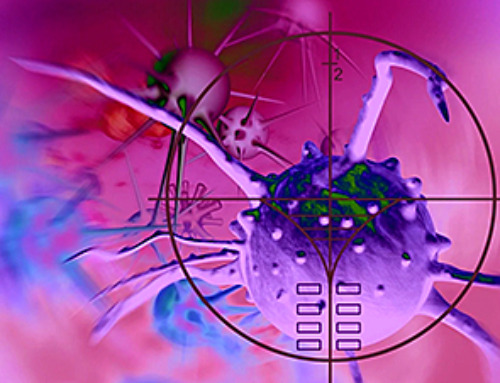In a significant step forward in understanding the crucial role tissue-resident memory T (TRM) cells play in the immune system, researchers have for the first time described how the cells behave in different tissues around the body.
This discovery adds to the growing knowledge base around the huge potential of T cell-based vaccines, including second generation COVID-19 vaccines, that would target lung tissue directly.
TRM cells are an immune cell that are exclusively found in tissues, not in circulation or the blood, and have been found to be critical for immune protection against viral infection and are also able to control melanoma growth in the skin.
In this study, published today in Nature Immunology, the research team led by University of Melbourne Professor Laura Mackay, a laboratory head at the Doherty Institute, looked at the behaviour of TRM cells in a number of different body tissues.
By comparing barrier organs that are exposed to the environment, like the skin, to solid organs such as the liver, the team found that the location in which TRMs are raised significantly impacts the way they contribute to immunity, demonstrating that ‘one size does not fit all’ when it comes to these cells.
Dr Susan Christo, a postdoctoral researcher in Professor Mackay’s laboratory, said uncovering the distinct molecular signatures and behaviours of TRM cells in specific tissues will considerably assist in the development of effective T cell-based vaccines and immunotherapies.
“For example, if you want effective T-cell mediated immunity against a respiratory virus like SARS-CoV-2 or influenza, you want to induce TRM cells in the lung. That way, the memory of the infection exists at the site of potential pathogen encounter,” Dr Christo said.
“We found that TRM cells act like chameleons when they enter into a new tissue – they rapidly adapt to the molecules and proteins around them and can take on a new ‘image’ or phenotype.
“The tissue surroundings also control how these cells behave – TRM cells in the skin are suppressed by a particular protein called TGF-b which acts like a handbrake to stop these cells from unnecessary activation that may cause autoimmunity, such as psoriasis, but still allows them to fight against dangers like melanoma.
“One key advantage of skin TRM cells is that they can last a really long time and will be ready to attack when the body is in true danger.
The team found the TRMs that reside in the liver do not have this TGF-b handbrake and therefore have a greater ability to form a bigger pool of cells.
“You could think of them as generating a large army of soldiers that fight the infection. However liver TRMs have a shorter half-life and might not be around to fight future battles,” explained Dr Christo.
“To give the example of malaria, if you want to target immune cells in the liver, you need to work out what needs to be done to make those cells live longer.
“This is also the case for short-lived TRM cells in the lung, which has significant implications on the durability of vaccines against the flu and COVID-19. Therefore, our study provided the first evidence of what our immune cells need to last the distance and protect us for a long time.”
News
Most Plastic in the Ocean Is Invisible—And Deadly
Nanoplastics—particles smaller than a human hair—can pass through cell walls and enter the food web. New research suggest 27 million metric tons of nanoplastics are spread across just the top layer of the North [...]
Repurposed drugs could calm the immune system’s response to nanomedicine
An international study led by researchers at the University of Colorado Anschutz Medical Campus has identified a promising strategy to enhance the safety of nanomedicines, advanced therapies often used in cancer and vaccine treatments, [...]
Nano-Enhanced Hydrogel Strategies for Cartilage Repair
A recent article in Engineering describes the development of a protein-based nanocomposite hydrogel designed to deliver two therapeutic agents—dexamethasone (Dex) and kartogenin (KGN)—to support cartilage repair. The hydrogel is engineered to modulate immune responses and promote [...]
New Cancer Drug Blocks Tumors Without Debilitating Side Effects
A new drug targets RAS-PI3Kα pathways without harmful side effects. It was developed using high-performance computing and AI. A new cancer drug candidate, developed through a collaboration between Lawrence Livermore National Laboratory (LLNL), BridgeBio Oncology [...]
Scientists Are Pretty Close to Replicating the First Thing That Ever Lived
For 400 million years, a leading hypothesis claims, Earth was an “RNA World,” meaning that life must’ve first replicated from RNA before the arrival of proteins and DNA. Unfortunately, scientists have failed to find [...]
Why ‘Peniaphobia’ Is Exploding Among Young People (And Why We Should Be Concerned)
An insidious illness is taking hold among a growing proportion of young people. Little known to the general public, peniaphobia—the fear of becoming poor—is gaining ground among teens and young adults. Discover the causes [...]
Team finds flawed data in recent study relevant to coronavirus antiviral development
The COVID pandemic illustrated how urgently we need antiviral medications capable of treating coronavirus infections. To aid this effort, researchers quickly homed in on part of SARS-CoV-2's molecular structure known as the NiRAN domain—an [...]
Drug-Coated Neural Implants Reduce Immune Rejection
Summary: A new study shows that coating neural prosthetic implants with the anti-inflammatory drug dexamethasone helps reduce the body’s immune response and scar tissue formation. This strategy enhances the long-term performance and stability of electrodes [...]
Scientists discover cancer-fighting bacteria that ‘soak up’ forever chemicals in the body
A family of healthy bacteria may help 'soak up' toxic forever chemicals in the body, warding off their cancerous effects. Forever chemicals, also known as PFAS (per- and polyfluoroalkyl substances), are toxic chemicals that [...]
Johns Hopkins Researchers Uncover a New Way To Kill Cancer Cells
A new study reveals that blocking ribosomal RNA production rewires cancer cell behavior and could help treat genetically unstable tumors. Researchers at the Johns Hopkins Kimmel Cancer Center and the Department of Radiation Oncology and Molecular [...]
AI matches doctors in mapping lung tumors for radiation therapy
In radiation therapy, precision can save lives. Oncologists must carefully map the size and location of a tumor before delivering high-dose radiation to destroy cancer cells while sparing healthy tissue. But this process, called [...]
Scientists Finally “See” Key Protein That Controls Inflammation
Researchers used advanced microscopy to uncover important protein structures. For the first time, two important protein structures in the human body are being visualized, thanks in part to cutting-edge technology at the University of [...]
AI tool detects 9 types of dementia from a single brain scan
Mayo Clinic researchers have developed a new artificial intelligence (AI) tool that helps clinicians identify brain activity patterns linked to nine types of dementia, including Alzheimer's disease, using a single, widely available scan—a transformative [...]
Is plastic packaging putting more than just food on your plate?
New research reveals that common food packaging and utensils can shed microscopic plastics into our food, prompting urgent calls for stricter testing and updated regulations to protect public health. Beyond microplastics: The analysis intentionally [...]
Aging Spreads Through the Bloodstream
Summary: New research reveals that aging isn’t just a local cellular process—it can spread throughout the body via the bloodstream. A redox-sensitive protein called ReHMGB1, secreted by senescent cells, was found to trigger aging features [...]
AI and nanomedicine find rare biomarkers for prostrate cancer and atherosclerosis
Imagine a stadium packed with 75,000 fans, all wearing green and white jerseys—except one person in a solid green shirt. Finding that person would be tough. That's how hard it is for scientists to [...]





















